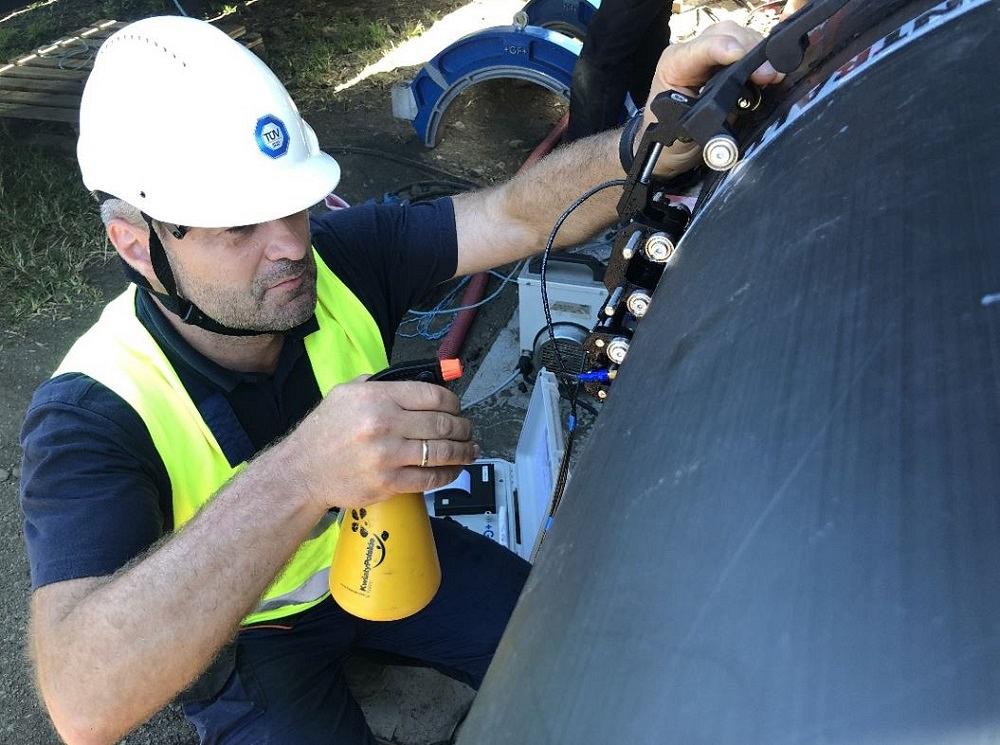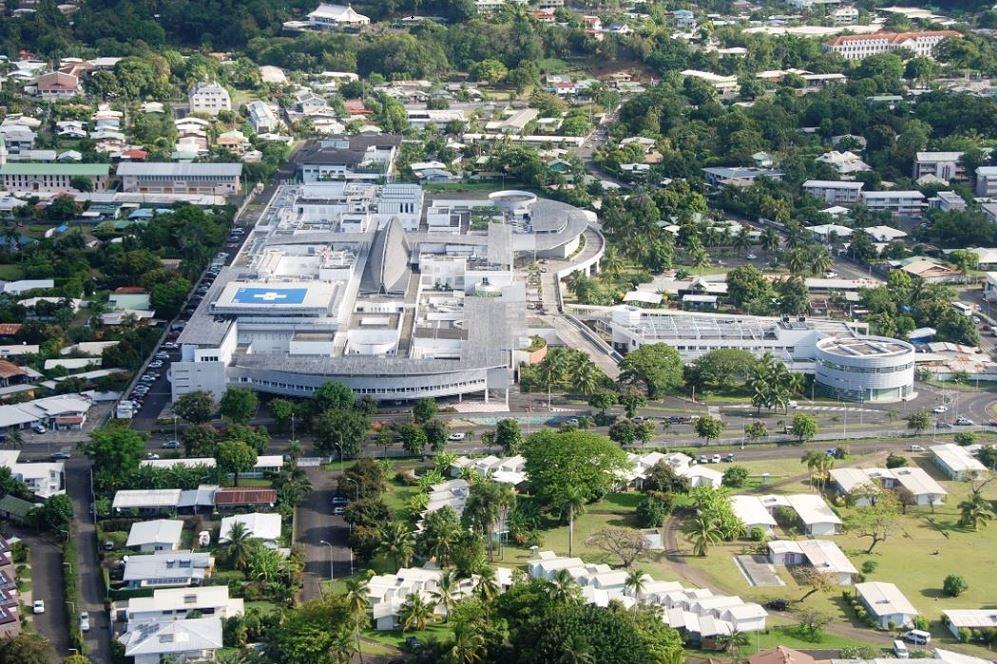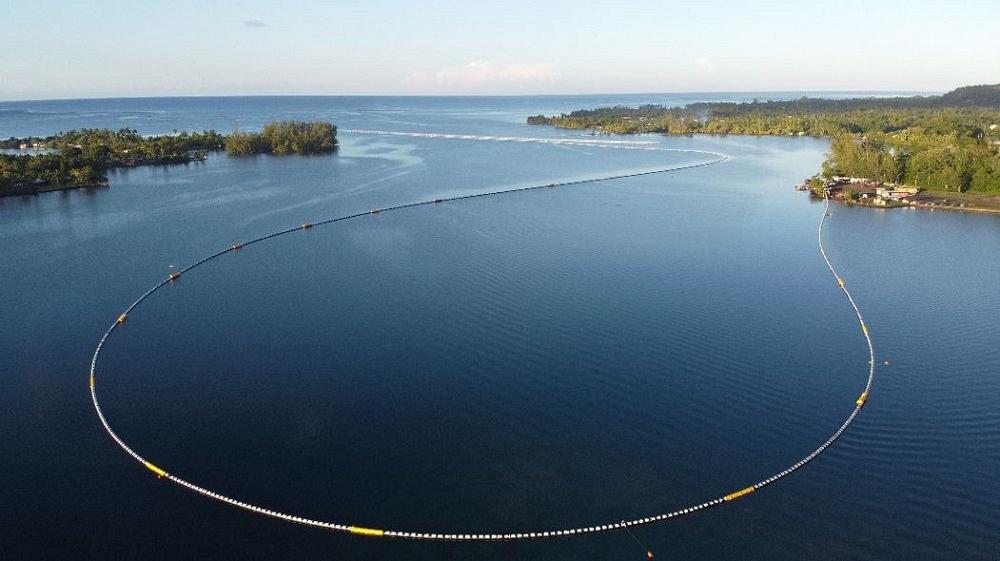- FMA
- The Fabricator
- FABTECH
- Canadian Metalworking
Categories
- Additive Manufacturing
- Aluminum Welding
- Arc Welding
- Assembly and Joining
- Automation and Robotics
- Bending and Forming
- Consumables
- Cutting and Weld Prep
- Electric Vehicles
- En Español
- Finishing
- Hydroforming
- Laser Cutting
- Laser Welding
- Machining
- Manufacturing Software
- Materials Handling
- Metals/Materials
- Oxyfuel Cutting
- Plasma Cutting
- Power Tools
- Punching and Other Holemaking
- Roll Forming
- Safety
- Sawing
- Shearing
- Shop Management
- Testing and Measuring
- Tube and Pipe Fabrication
- Tube and Pipe Production
- Waterjet Cutting
Industry Directory
Webcasts
Podcasts
FAB 40
Advertise
Subscribe
Account Login
Search
Using ultrasonic nondestructive testing to ensure deep water success
Pipeline adapts weld metal testing for seawater air conditioning system
- By Katherine Bonamo
- December 24, 2022
- Article
- Testing and Measuring

Before final installation, GF Piping Systems evaluated the condition of each weld by ultrasound, using a sophisticated algorithm to predict future performance.
When the General Hospital of French Polynesia (French acronym CHPF) wanted a better way to cool its buildings, it looked to a solution that used both the most common resource on earth and an innovative way to ensure the project’s success.
Reaching Higher by Going Deep
CHPF, located in the capital city of Papeete, is the referral hospital for the entire nation, an overseas territory of France that has more than 100 widely scattered islands in the South Pacific. Given the region’s tropical climate, air conditioning is a high priority for health care facilities. The average annual temperature in Papeete is 79 degrees F, with high humidity during the rainy season. Cooling the facility with traditional air conditioning was energy-intensive, with negative effects on the environment and the hospital’s bottom line.
To counter both of those challenges, CHPF partnered with Geocean to install the world’s longest seawater air conditioning system (SWAC).
Based in Cassis, France, Geocean is the marine and offshore works division of VINCI Construction Grands Projets. Its work focuses on near-shore and shallow-water construction projects where offshore gradually becomes onshore. With an emphasis on providing turnkey development, its capabilities encompass design, procurement, construction, and installation.
In areas with ready access to the ocean, SWAC systems provide a climate-friendly alternative. Since they exploit the already cold temperatures of ocean water (drawn from depths below 700 m), SWACs require far less electricity (as much as 75%) to achieve the same cooling results. According to a 2020 study in the journal Energy Efficiency, 1 m3 of water in a SWAC system can provide the same cooling energy as 21 wind turbines or a solar power plant the size of 68 football fields.
The appeal was clear to CHPF, but so were the challenges of Geocean’s project. Once the necessary piping had been laid on the ocean floor, there would be no second chances—complete confidence in each one of almost 400 welds was essential.
The key to success for Geocean came from an experienced partner and a new technology: GF Piping Systems and its ultrasonic nondestructive (NDT) weld testing. The company originally developed its version of ultrasonic NDT for metal welds but adapted it to test joints on plastic piping systems as well.
With 60 years of experience, GF Piping Systems supplies safe and sustainable fluid transport systems. As demonstrated by its development of ultrasonic NDT for weld evaluation, the company focuses strongly on partnering with customers to find answers to problems.
Strengthening the Weak Link
Welds can be the Achilles’ heel of any piping system. They are critically important for safe and reliable operation—but historically, as many as one in 300 welds can be expected to fail. Until quite recently, it was impossible to verify the quality of welds in plastic piping systems at installation without destroying the welds.
Owners and project managers were faced with a painful dilemma: They could choose to destroy some welds—and hope that testing some in this way would provide a valid read on the condition of the others, or they could refrain from destructive testing and accept a higher level of economic and reputational risk. Conventional pressure testing simply could not predict a weld’s future accurately.

The General Hospital of French Polynesia is the main regional hospital for the entire nation, which comprises dozens of islands in the South Pacific.
To provide a better solution, GF Piping Systems looked at 25 years’ worth of materials research, cataloging the fine details of numerous welds and tracking how that information correlated with the welds’ long-term strength.
This data allowed GF Piping Systems to develop a proprietary algorithm that can assess the likelihood of future weld failure on a pass/fail basis, with results available within 24 hours.
Once on-site, inspectors deploy such techniques as time-of-flight diffraction and phased-array ultrasonic testing to gather information about weld status. Welds that don't pass can be replaced right away. Once all welds pass, it is safe to proceed with steps (such as closing a trench) that make future access to the welds difficult or impossible.
A Massive Undertaking
For Geocean’s ambitious project in Tahiti, the importance of peace of mind on this score could scarcely be overstated.
The government of French Polynesia commissioned the SWAC system for CHPF with the objective of helping to phase out fossil fuels while reaping the benefits of lower energy consumption. Since SWAC relies on a renewable resource and can reduce power demands, Ocean Energy Europe has called it “the perfect technology to decarbonize heating and cooling systems around the world’s coasts.’’ SWAC systems also are considerably quieter and more compact than traditional air conditioning equipment.
SWAC systems work by using cold ocean water to chill a closed loop of fresh water via a system of heat exchangers. The ocean water that has been warmed by the exchange is then returned to the sea. For the CHPF project, Geocean planned for a 3,800-m intake pipe that would extend into the ocean to a maximum depth of 900 m, with three pumps able to draw 1 million liters of water per hour.
The intake pipe sends water into the hospital air conditioning system at a temperature of approximately 41 degrees F, while a 200-meter discharge pipe returns the water to the ocean at approximately 53 degrees F. The cooling takes place directly, though thermal contact, with no electricity generation. The pipelines are formed of NPS 710-mm high-density polyethylene (HPDE) pipes welded by the polyfusion method. With a total length of 4,300 m, the system ranks as the longest of its kind in the world.
To create such a large system without unnecessary disruption to the hospital, the pipeline was primarily assembled at a work site in Papeari, on the other side of the island. Upon completion, the entire length was towed through the ocean to a connection site near Papeete—subjecting the pipeline and all its welds to extreme conditions. Skilled technicians worked as high as nine stories above ground, then performed the delicate operation of connecting the multi-ton pipe to the hospital air conditioning network.
Another concern was that once the pipe was laid, the flexible polyethylene piping would conform to the irregular ocean floor, possibly subjecting welds to additional stress but in a place where repairs would be impossible. Advance knowledge of the welds’ condition, with scientific certainty, could not have been more essential to the project’s viability.
A Positive Outcome
Given the absolute necessity of knowing that the welds would hold, the SWAC project for CHPF provided an almost perfect test case for GF Piping Systems’ ultrasonic NDT capability, both technologically and organizationally.

At more than 4,000 m, the sea water air conditioning system (SWAC) at the General Hospital of French Polynesia is the longest of its kind in the world. Geocean completed the $32.6 million project in less than a year.
Fortunately, the project passed this test with flying colors. Construction on the $32.6 million project was completed in November 2021 after less than a year of work, despite the disruptions of COVID-19. The system became fully operational at the hospital in July 2022. All parties concerned felt satisfied with the positive outcome of their work together.
“Each of the 350 welds made had to be inspected by ultrasound, and GF Piping Systems was the only one to prove and guarantee to us the effectiveness of their system,” Geocean Project Manager Roy Issa said.
Damien Moine, sales manager for utilities at GF Piping Systems France, echoed the importance of this role for his company. “We started with technical support right from the launch of the project, up through providing a service that is unique in the marketplace: nondestructive testing by ultrasound,” Moine said.
Meanwhile, the SWAC is achieving important goals for CHPF and for French Polynesia. The system will lower the hospital’s annual electricity consumption by 12 GWh per year, representing 90% of its previous expenditure on air conditioning and slightly more than a third of its total usage. Annual cost savings for the hospital are estimated at $2.9 million.
With the hospital also producing 5,000 fewer tons of CO2 each year, Issa noted that the project is expected to replace a full 2% of the carbon-based energy used in French Polynesia. Approximately two-thirds of the electricity in French Polynesia is generated by imported petroleum, and (at least until now) CHPF has been the region’s most energy-intensive establishment.
The Future Is Green
The SWAC concept was first developed in the 1960s, and early adopters include the Sydney Opera House, which was completed in 1973. Systems currently exist in coastal locations from Hong Kong to Hawaii, including elsewhere in French Polynesia. However, the true potential of this approach has yet to be fully tapped. For example, current regional sustainability plans in the Caribbean region have not focused on the technology.
One possible barrier to adoption is the high upfront cost of construction. However, investment in a SWAC is likely to be recouped in the long run. For example, the SWAC installed at CHPF is expected to have an operational lifetime of 30 years, but cost savings are great enough that the project should achieve return on investment within 10 or 15 years.
Geography is clearly one limitation of this solution. Strictly speaking, SWAC is only realistic for buildings in very close proximity to the ocean. Furthermore, it is easiest to execute in locations where the depth of the ocean falls off relatively steeply from the shore—as it does near Tahiti. However, cooling systems on the same principle are possible for sites close to deep lakes as well. For example, Lake Source Cooling at Cornell University uses water from Cayuga Lake to provide cooling for both the Cornell campus and nearby Ithaca High School.
A Pressing Need
According to a report from the International Energy Agency, the energy consumed by the cooling of buildings around the world tripled between 1990 and 2016, making it the fastest-growing source of energy demand. This level of usage burdens the electrical grid in warmer regions and contributes more than a million tons of CO2 to the environment each year. Recent high temperatures across the globe suggest that the need for cooling will only grow in years to come. By 2070, worldwide demand for cooling may surpass the worldwide demand for heat.
About the Author
About the Publication
subscribe now

The Tube and Pipe Journal became the first magazine dedicated to serving the metal tube and pipe industry in 1990. Today, it remains the only North American publication devoted to this industry, and it has become the most trusted source of information for tube and pipe professionals.
start your free subscription- Stay connected from anywhere

Easily access valuable industry resources now with full access to the digital edition of The Fabricator.

Easily access valuable industry resources now with full access to the digital edition of The Welder.

Easily access valuable industry resources now with full access to the digital edition of The Tube and Pipe Journal.
- Podcasting
- Podcast:
- The Fabricator Podcast
- Published:
- 04/16/2024
- Running Time:
- 63:29
In this episode of The Fabricator Podcast, Caleb Chamberlain, co-founder and CEO of OSH Cut, discusses his company’s...
- Trending Articles
Zekelman Industries to invest $120 million in Arkansas expansion

3D laser tube cutting system available in 3, 4, or 5 kW

Corrosion-inhibiting coating can be peeled off after use

Brushless copper tubing cutter adjusts to ODs up to 2-1/8 in.

HGG Profiling Equipment names area sales manager

- Industry Events
16th Annual Safety Conference
- April 30 - May 1, 2024
- Elgin,
Pipe and Tube Conference
- May 21 - 22, 2024
- Omaha, NE
World-Class Roll Forming Workshop
- June 5 - 6, 2024
- Louisville, KY
Advanced Laser Application Workshop
- June 25 - 27, 2024
- Novi, MI



























